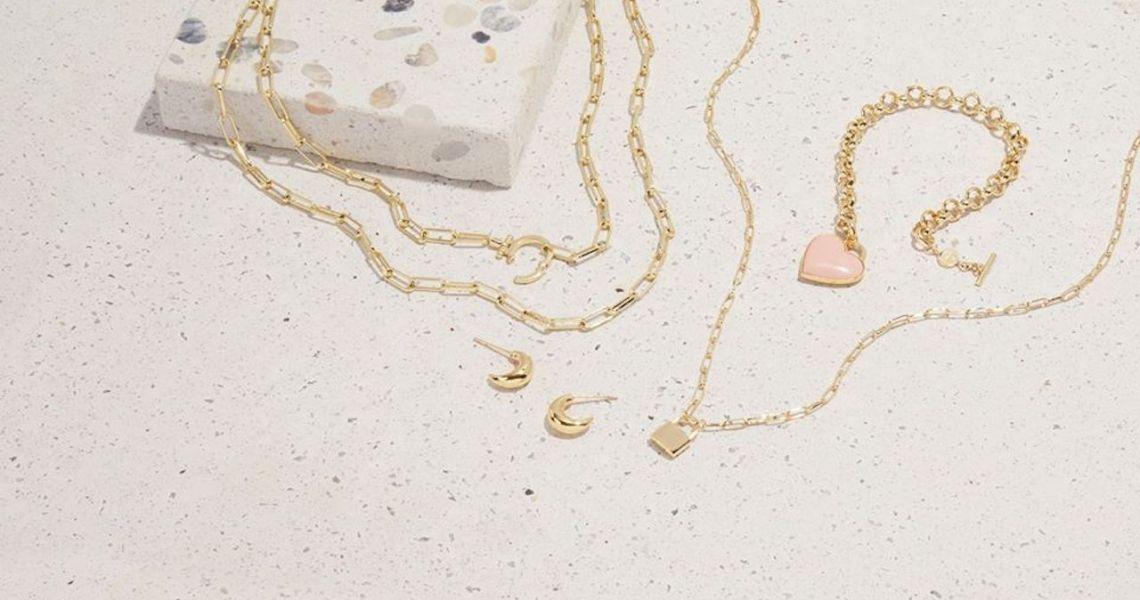After starting off as a wholesale-only business, jewelry company Gorjana spent the last four years making a major shift into physical retail.
While wholesale partnerships generally help younger companies gain brand awareness and drive sales, they typically don’t allow brands to control the experience customers have with their product. More often than not, digital-native companies look to open their own retail locations, as well as their own e-commerce sites, to connect more directly customers and have more control over the brand story they share. Three years ago, 90% of Gorjana’s sales were coming through wholesale channels and only 10% from DTC. Today, after making a big move into physical retail, 80% of sales are direct-to-consumer, made in-store or online. (The company did not break down in-store versus online sales.)
“Customer experience is so much part of the differentiation for brands. You can’t differentiate on product alone. By having a combination of physical retail and a digital presence, consumers get that omnichannel experience that is personalized,” said John Nash, chief marketing and strategy officer at software company RedPoint Global.
Founded in 2004, Gorjana started off working with smaller boutiques and retailers until striking it big in 2014, scoring a partnership in select Nordstrom stores primarily in the Los Angeles area. The brand went into all Nordstrom stores the following year. In 2016 Gorjana had its best year to date in wholesale growth, and after getting positive feedback from Nordstrom and its customers, founders Gorjana Reidel and her husband Jason Griffin Reidel, decided it was time to take more control of the customer experience. That February, they opened the first Gorjana store in Laguna Beach, California.
There wasn’t a huge rush to open a ton of stores after that, Jason Griffin Reidel said. Since the founders had little experience in physical retail and an in-store staff of just two, the first year was about testing and learning how to make physical retail a success for Gorjana.
“In the first two years of retail, we had three stores close to home and all were short-term leases just in case they didn’t work. The other thing we focused on was how to make the spaces nice without going overboard [with decorating and design]. Some companies raise money and don’t have to worry about being profitable and all these little things, but we did,” Reidel said.
Gorjana has not done any fundraising since it launched and is currently profitable, according to Reidel.
Ad position: web_incontent_pos1
The second store, in New York City’s West Village, opened in the fall of 2017, and another quickly followed, in Venice, California. Already this year, the brand opened a space in Williamsburg, Brooklyn, and another in Northern California. Over the last four years, Gorjana has opened a total of 15 stores across California, New York City and Arizona, with more to come in 2020. By the end of May, the company will have 18 locations.
“We don’t have to open a bunch more stores. We have three more opening this year, and that’s fine, and we don’t have to open another store if we don’t want to,” said Reidel, co-founder of Gorjana.
Part of Gorjana’s strategy has been to opt for spaces that are, “close to home,” said Reidel. “It’s also a lot easier to put fires out when stores are close to home. Even when there was trouble and we only had two employees, if there was a problem, we knew who to go to. We had all those learnings close to home, we interacted with the customer, and we started to find out what they like and don’t like,” he said.
Despite living in Los Angeles, the founders have an apartment in New York, as well, and know the city well. Thus, opening three stores in New York (so far) was an easy decision for the brand. But Reidel said the decision of where to open next is not so easy.
“That low-hanging fruit is gone. When we were going after these spaces, it was very methodical. Now we have people calling us at least once a week with opportunities for new stores. To me, that is a sign to slow down a little,” he said.




